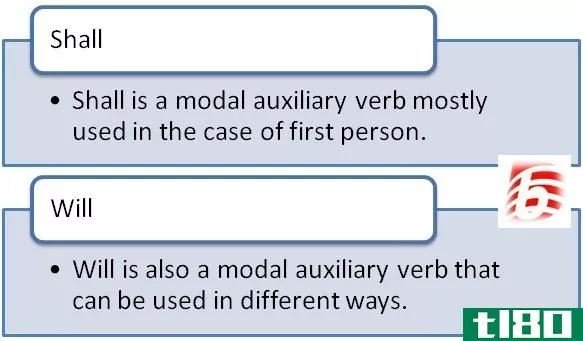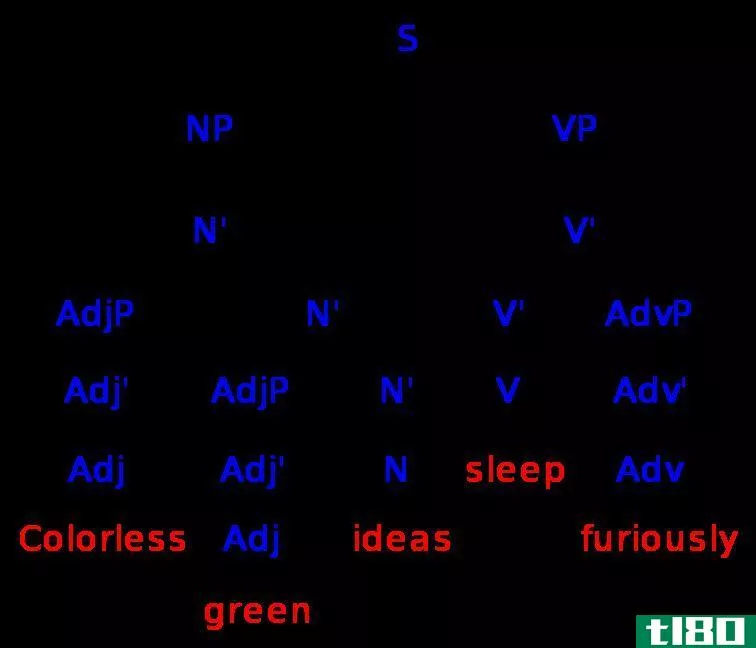情态(语法和语义)
在语法和语义学中,情态指的是一种语言手段,它表明一种观察在多大程度上是可能的、可能的、可能的、确定的、允许的或禁止的。在英语中,这些概念通常(尽管不是唯一)由情态助词表达,如can、may、should和will。它们有时与not结合在一起。

Martin J.Endley认为,“解释情态的最简单方法是说,它与说话人对话语中表达的某种情景所采取的立场有关……[M]情态反映了说话人对所描述情景的态度”(《英语语法的语言学观点》,2010年)。
黛博拉·卡梅隆举例说明:
"[Modality] is what makes the difference between a factual assertion like unicorns never existed, and a more guarded view, such as it seems unlikely that unicorns could ever have existed—or a bolder claim like the existence of unicorns must always have been a myth. Modality, then, is a resource speakers and writers use when they are staking claims to knowledge: it allows them to formulate different kinds of claims (e.g., assertions, opinions, hypotheses, speculations) and indicate how committed they are to those claims." ("The Teacher's Guide to Grammar," Oxford University Press, 2007)语法上表示情态的
正如时态表示动词的时间方面一样,用来表示情态的词表示句子的语气,即陈述的事实性或断言性,可以通过多种方式完成,包括使用形容词。Martin J.Endley在《英语语法的语言学视角》中解释道:
"Thus, a situation might be described as possible, probable, necessary, or certain. The noun counterparts of these adjectives also express modality so that a situation can be described as a possibility, a probability, a necessity, or a certainty. Moreover, it is possible to use ordinary lexical verbs to convey modality....And think about the difference between saying that you know something and saying that you believe something. Such differences are essentially a matter of modality. Finally, English also contains certain semi-fixed lexical phrases (e.g., rumor has it) that are, basically, modal expressions." (IAP, 2010)表达情态的其他术语是边缘情态,如需要、应该、敢或习惯。
深入:情态的类型
使用情态表达的可能性范围很广,从不大可能到很可能;为了表达这些不同的层次,情态带有命名的等级,正如作者Günter Radden和RenéDirven在《认知英语语法》中所解释的:
"Modality is concerned with the speaker's assessment of, or attitude towards, the potentiality of a state of affairs. Modality, therefore, relates to different worlds. Assessments of potentiality, as in You must be right, relate to the world of knowledge and reasoning. This type of modality is known as epistemic modality. Modal attitudes apply to the world of things and social interaction. This type of modality is known as root modality. Root modality comprises three subtypes: deontic modality, intrinsic modality and disposition modality. Deontic modality is concerned with the speaker's directive attitude towards an action to be carried out, as in the obligation You must go now. Intrinsic modality is concerned with potentialities arising from intrinsic qualities of a thing or circumstances, as in The meeting can be canceled, i.e. 'it is possible for the meeting to be canceled.' Disposition modality is concerned with a thing's or a person's intrinsic potential of being actualised; in particular abilities. Thus, when you have the ability to play the guitar you will potentially do so....Modal verbs have a special status among modal expressions: they ground a situation in potential reality." (John Benjamins, 2007)- 发表于 2021-10-07 16:45
- 阅读 ( 177 )
- 分类:人文
你可能感兴趣的文章
应该(shall)和威尔英语语法(will in english grammar)的区别
... 英语语法中的shall vs will 鉴于Shall和Will是两种用法不同的情态助动词,我们理解了在英语语法中学习Shall和Will区别的重要性。这个词应该起源于古英语单词sceal。Shall总是用作动词。相反,will既用作名词,也用作动词。然而,与s...
- 发布于 2020-10-28 00:43
- 阅读 ( 339 )
语法(syntax)和语义学(semantics)的区别
主要区别——语法与语义 句法和语义是语言学的两个重要分支。语言学是对语言的研究。句法是对句子结构的研究,语义学是对语言意义的研究。因此,句法与语义的主要区别在于句法与结构有关,语义与意义有关。 什...
- 发布于 2021-06-27 06:31
- 阅读 ( 597 )
情态动词(modal)和助动词(auxiliary verbs)的区别
... 主要差异模态(main difference modal) vs. 助动词(auxiliary verbs) 情态动词和助动词是帮助其他动词表达意思的动词。助动词表示诸如时态、语气、声音和动作的其他语法方面的信息。情态动词是一类表示情态的助动词。情态动词和助动...
- 发布于 2021-06-27 13:52
- 阅读 ( 799 )
句法分析(syntax analysis)和语义分析(semantic analysis)的区别
语法分析与语义分析的主要区别在于,语法分析取词法分析生成的代词,生成解析树,语义分析检查语法分析生成的解析树是否遵循语言的规则。 通常,程序员使用高级编程语言编写程序。他能理解这些程序,但计算机不理解...
- 发布于 2021-07-02 02:17
- 阅读 ( 765 )
应该(shall)和应(shall be)的区别
...即使是以英语为母语的人也会错过英语语法的关键要素。情态动词就是这样一类语法。顾名思义,它是动词的一个范畴,用来表示情态。情态动词有多种用途。其中一个目的是表示确定性,如果它是可能的或不可能的。另一个主...
- 发布于 2021-07-07 15:00
- 阅读 ( 267 )
应该(should)和应该是(should be)的区别
...态和基础知识要遵循“应该”是人们在谈话中使用的一个情态动词Should是Shall的过去时,Should是英语中的助动词“应该是”用来表示诸如下订单、正确性、必须需要什么的动作。应该(should) vs. 应该是(should be)Should和Should be的区别...
- 发布于 2021-07-11 08:20
- 阅读 ( 235 )
应该(shall)和可以(may)的区别
...词类。根据用法,每一个词都有不同的含义。Shall和may是情态助动词的两个例子。应该(shall) vs. 可以(may)“应”和“可”的区别在于,“应”是在你发出命令或告诉不可避免的事情时使用的,而“可”则是在你需要请求允许或某...
- 发布于 2021-07-11 11:58
- 阅读 ( 275 )
语义学(semantics)和语法(syntax)的区别
...的学科。另一方面,句法研究的是分析单词如何组合形成语法句子。 语言学是对语言的研究。语言学大体上分为一般语言学、微观语言学和宏观语言学。句法和语义属于微观语言学范畴,涉及语言的内部观。 语义学研究的是词...
- 发布于 2021-07-14 01:01
- 阅读 ( 195 )
英语情态动词
在英语语法中,情态动词是与另一个动词结合以表示语气或时态的动词。情态动词,也称为情态助词或情态动词,表示必然性、不确定性、可能性或许可。 模态基础 理解情态动词在英语中的作用是完全正常的,因为它们的...
- 发布于 2021-09-06 00:27
- 阅读 ( 127 )
什么是英语语法中的语义变化?(semantic change in english grammar?)
在语义学和历史语言学中,语义变化是指随着时间的推移,一个词的意义发生的任何变化。也称为语义转移、词汇变化和语义推进。常见的语义变化类型包括改进、贬义、扩展、语义缩小、漂白、隐喻和转喻。 当以另一种语...
- 发布于 2021-09-17 08:07
- 阅读 ( 284 )















